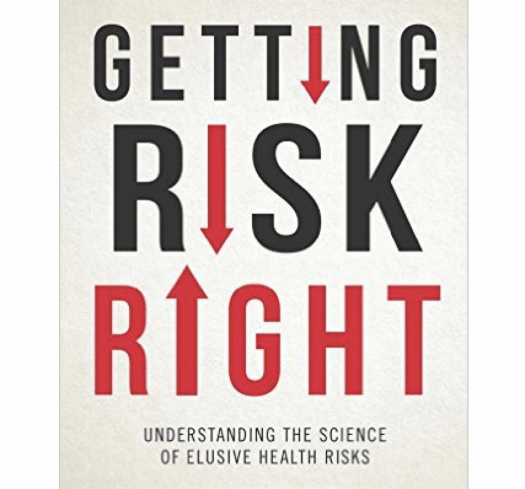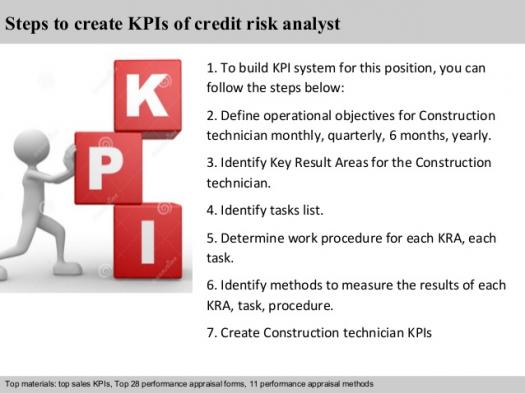What Do You Know About Risk Analyst?

A Risk Analyst analyzes risks and these risks are mostly geared towards commerce. Are you one or you've used the services of one before.
- 1.
Risk analysis can be explained to include?
- A.
Risk assessment
- B.
Risk characterization and communication
- C.
Risk management
- D.
All of the above
Correct Answer
D. All of the aboveExplanation
Risk analysis includes risk assessment, risk characterization and communication, and risk management. Risk assessment involves identifying and evaluating potential risks, while risk characterization and communication involve understanding and conveying the nature and extent of the risks. Risk management involves implementing strategies to mitigate or control the identified risks. Therefore, all three options are correct and encompass the various components of risk analysis.Rate this question:
-
- 2.
A risk policy can be related in the context of risks of concern to?
- A.
Individuals or organization
- B.
Public
- C.
Private sector
- D.
All of the above
Correct Answer
D. All of the aboveExplanation
A risk policy can be related in the context of risks of concern to individuals, organizations, the public, and the private sector. This means that risk policies can apply to any entity or group that faces potential risks or hazards. Risk policies are put in place to identify, assess, and manage risks in order to minimize potential negative impacts. Therefore, it is applicable to all the options mentioned in the question.Rate this question:
-
- 3.
A useful construct is to divide risk analysis into two, which are?
- A.
Risk assessment and management
- B.
Risk policy and mitigation
- C.
Risk management and advise
- D.
All of the above
Correct Answer
A. Risk assessment and managementExplanation
The correct answer is "Risk assessment and management." This construct involves dividing risk analysis into two distinct components: risk assessment and risk management. Risk assessment involves identifying and evaluating potential risks, while risk management involves implementing strategies and measures to mitigate or control those risks. This division allows for a comprehensive approach to understanding and addressing risks in a systematic manner.Rate this question:
-
- 4.
Risk analysis can be said to be qualitative or?
- A.
Substantial
- B.
Subliminal
- C.
Quantitative
- D.
None of the above
Correct Answer
C. QuantitativeExplanation
Risk analysis can be said to be qualitative or quantitative. Qualitative risk analysis involves assessing risks based on subjective judgments and descriptions, while quantitative risk analysis involves using numerical data and calculations to assess risks. Therefore, the correct answer is "Quantitative."Rate this question:
-
- 5.
Qualitative risk analysis uses broad terms such as?
- A.
Moderate
- B.
Severe
- C.
Catastrophic
- D.
All of the above
Correct Answer
D. All of the aboveExplanation
Qualitative risk analysis uses broad terms such as "moderate," "severe," and "catastrophic" to assess and categorize risks. These terms help in understanding the potential impact and likelihood of risks occurring. By using these broad terms, qualitative risk analysis provides a high-level understanding of the risks involved without going into specific numerical values or measurements.Rate this question:
-
- 6.
Qualitative risk analysis assess probabilities for the potential consequences of?
- A.
Policy
- B.
Strategy
- C.
Risk
- D.
None of the above
Correct Answer
C. RiskExplanation
Qualitative risk analysis assesses the probabilities for potential consequences of risks. It involves evaluating the likelihood and impact of risks without using specific numerical values. This analysis helps in understanding the severity of risks and prioritizing them for further analysis or mitigation. Therefore, the correct answer is "Risk".Rate this question:
-
- 7.
The consequences of risk are often called probabilistic risk analysis or probability risk?
- A.
Analyses
- B.
Policy
- C.
Plan
- D.
Assessment
Correct Answer
D. AssessmentExplanation
The consequences of risk are often referred to as probabilistic risk analysis or probability risk assessment. This involves evaluating the likelihood and impact of various risks in order to determine their potential consequences. By conducting a risk assessment, organizations can identify and prioritize risks, develop strategies to mitigate them, and make informed decisions to minimize their impact.Rate this question:
-
- 8.
The analysis often seeks to describe the consequence of numerical units such as?
- A.
Dollars
- B.
Lives lost
- C.
Time
- D.
All of the above
Correct Answer
D. All of the aboveExplanation
The analysis often seeks to describe the consequence of numerical units such as dollars, lives lost, and time. This means that when conducting an analysis, it is common to consider and evaluate the impact or outcome in terms of these three units. By including all of these options in the answer, it suggests that all three units are commonly used and important in analyzing and understanding consequences.Rate this question:
-
- 9.
Probability risk assessment with a specific mode of inquiry was initially developed to analyze?
- A.
Engineering risks
- B.
Financial risks
- C.
Probability risks
- D.
None of the above
Correct Answer
A. Engineering risksExplanation
Probability risk assessment with a specific mode of inquiry was initially developed to analyze engineering risks. This means that the method was specifically designed to assess and analyze risks related to engineering projects or processes. It is likely that the mode of inquiry used in this assessment is tailored to the unique characteristics and challenges of engineering risks, making it a suitable approach for this specific domain.Rate this question:
-
- 10.
Recently, probability risk assessment has also been applied to other areas, such as?
- A.
Business and security
- B.
Climate change
- C.
Health risks and food safety
- D.
All of the above
Correct Answer
D. All of the aboveExplanation
Probability risk assessment has recently been applied to various areas such as business and security, climate change, and health risks and food safety. This means that the application of probability risk assessment is not limited to just one specific field, but has expanded to encompass multiple domains. This suggests that probability risk assessment is a versatile tool that can be used in different contexts to assess and manage risks effectively.Rate this question:
-
Quiz Review Timeline +
Our quizzes are rigorously reviewed, monitored and continuously updated by our expert board to maintain accuracy, relevance, and timeliness.
-
Current Version
-
Mar 20, 2023Quiz Edited by
ProProfs Editorial Team -
Mar 02, 2018Quiz Created by
Timmy198
 Back to top
Back to top












